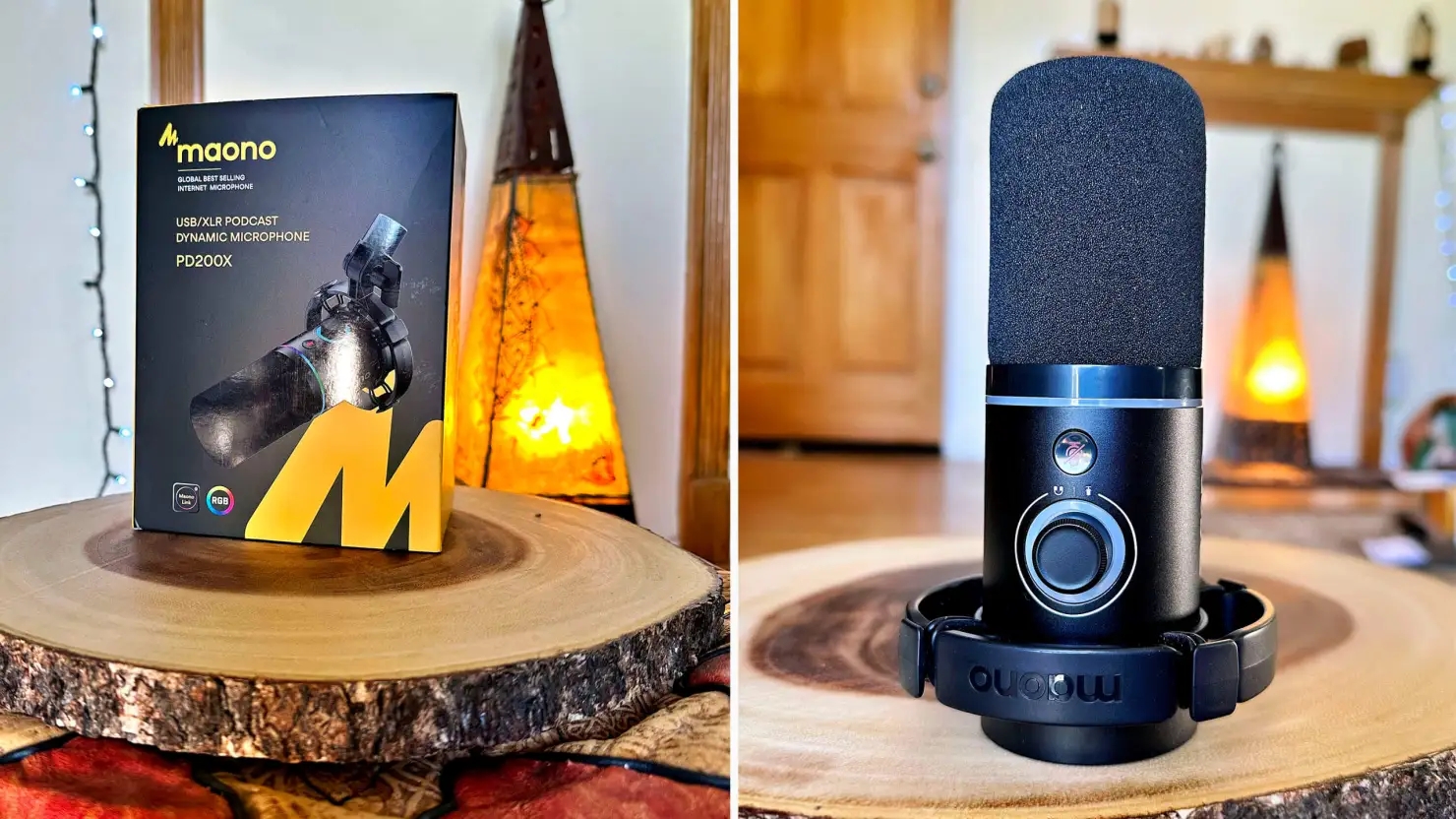
Can the Maono USB/XLR Dynamic Podcast Microphone help photographers with streaming, YouTube podcasts, vlogging, gaming or communicating with clients? We conducted an in-depth investigation on this microphone so you can gain more information and see its use first-hand.
Maono PD200X USB/XLR Dynamic Podcast Microphone is an elegant dynamic microphone, distinguished from other mics by a bright band of light that either stays the same color or keeps shifting, setting this microphone apart from most. This unique design has proven popular with gamers and Twitch streamers.
How well does the microphone serve vloggers, photographers and content creators? I conducted several Zoom and Skype calls while testing this microphone; you can hear audio examples comparing its quality with those from my 2017 iMac 27” internal mic as well as more expensive HyperX Quadcast USB Microphone.
Note: Maono provided us with their USB/XLR Dynamic Podcast Microphone in exchange for our review and evaluation, yet all thoughts about this microphone remain strictly impartial and our own.
Pros
Attractive microphone with an eye-catching band of glowing lights that stands out from other microphones; easy gain-control dial on the side allows easy volume adjustment; LED indicator light around volume knob shows function and volume settings
Monitor microphone input through a 3.5mm headphone jack; everything on the microphone is easily accessible and simple to understand, while control can be provided through Maono Link app (Windows, Mac, Android and Google Play). There may be potential drawbacks with regards to functionality; please see here for further details.
Self-noise can be too loud for quiet or delicate audio applications
All technical specifications provided on the Maono USB/XLR Dynamic Podcast Microphone come directly from their official website.
Element Type: Dynamic microphone for cardioid patterns, Polar Pattern: Cardioid and Connectivity Options are: XLR and USB-C with Bit Depth/Sample Rate being 24-bit and 48kHz, frequency response between 40Hz-16kHz with adjustable gain range 0 to +42dB sensitivity: XLR: -52dBV whilst USB has maximum SPL reaching 130dB SPL SPL levels
Compatible Devices: Desktop/Laptop/Computer/Mixer/Audio Interface/PS4/PS5/MAC OS/WINDOWS The product can be used for Podcasting, Recording, Streaming, Gaming or Video Conference purposes.
What’s included: Dynamic Microphone, Shock Mount, 2.5m USB-C to USB-A/C Cable with 5/8″ to 3/8″ Adapter and 18 Months Free Warranty (PDF included for user’s manual). Also compatible with Maono Link App which comes complete with PDF manual for easy reference.
Maono USB/XLR Dynamic Podcast Microphone — Ergonomics and Quality Construction
Easy Setup
I used the Maono microphone with a mid-2017 iMac and found its installation seamless; as soon as I connected its USB plug in, the computer immediately recognized and recognized Zoom, Google Meet, Skype as well. Most USB microphones work this way too but still, it was refreshing knowing this worked flawlessly; when Nightaxians Night Photography YouTube podcasting resumes again later on this summer.
Once connected via USB, when you plug in a microphone the band lights up with either dynamic changing colors or one of eight preset options for you to select.
Maono Link App
When using the Maono microphone, its functions are accessible without using their free app; many are easily accessible on its body itself and it works effectively without it. With their app however, you have access to limiter, compressor and volume controls as well as RGB light customization and one-button mutes – features that may come in handy!
On my iMac, installation was quick and painless – the app instantly recognized and controlled my microphone, making two recordings with and without compression/limiter (see below for example) as quickly as possible. Overall, the interface is extremely user friendly with a clean layout.
Build Quality
This microphone is best used for vlogging, streaming, video podcasting and podcasts. While its metal body may provide enough durability for commercial recording studio use, its plastic shock mount and adapter mean this mic won’t withstand all the strain associated with studio recordings; but that doesn’t make its build inferior when applied for other purposes such as gaming and vlogging.
The dial and other buttons feel fine, although slightly plasticky. There is also a small button on each button which allows you to choose either continuously-changing multicolor gradients or one of eight static solid color effects.
Notably, I should mention that the included 8.2 foot USB cable feels strong and long-term reliable.



